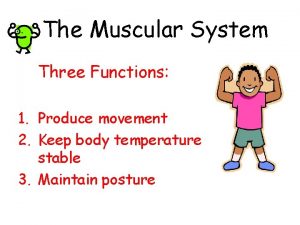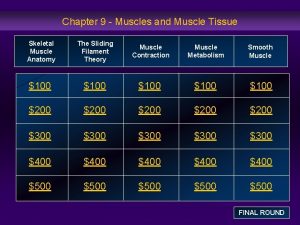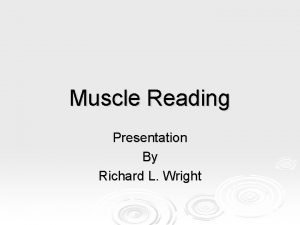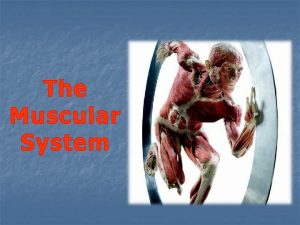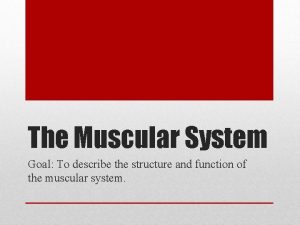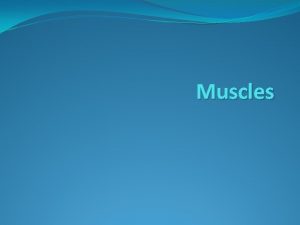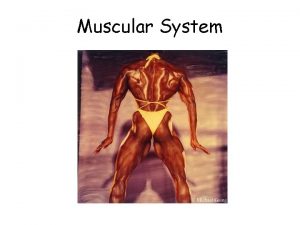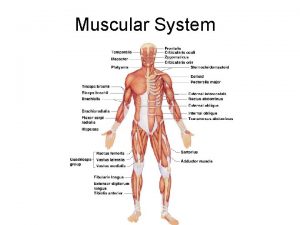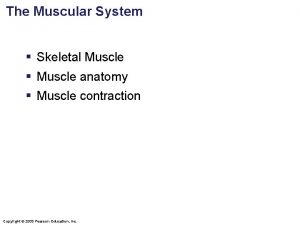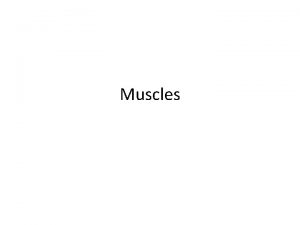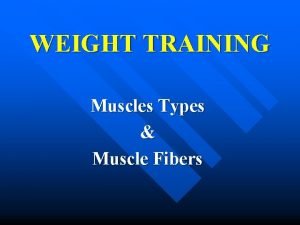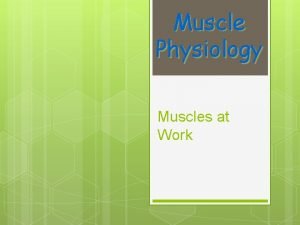The Muscular System Muscles Three types of muscle







![General Terms Origin [head] – end of muscle attached to the bone that is General Terms Origin [head] – end of muscle attached to the bone that is](https://slidetodoc.com/presentation_image_h2/5785cd0efcdd89a60c2b9a5338d6f4c2/image-8.jpg)
- Slides: 8

The Muscular System

Muscles Three types of muscle tissue • Cardiac – found only in the heart. Non-voluntary • Smooth/visceral – found in all internal organs. Non-voluntary • Skeletal – associated with the skeletal system. Voluntary

Cardiac Muscle Cells are cylindrical and striated Single large, centrally located nucleus Branched and connected to each other via intercalated discs

Smooth Muscle Cells are spindle shaped, non-striated Single large, centrally located nucleus Gap junctions are found between cells

Skeletal Muscle Cells are very long, cylindrical and striated Multinucleated, found towards periphery

Functions of Skeletal Muscle Body Movement (Force) Maintenance of posture Production of body heat Communication

Characteristic Properties of Muscle • Conductivity: A muscle has the ability to conduct an action potential. • Irritability: When stimulated, the muscle will react. • Contractility: A muscle can shorten or produce tension between its ends. • Relaxation: A muscle can return to resting properties after contraction. • Distensibility: A muscle can be stretched by a force outside of the muscle itself. The muscle is not injured as long as it is not stretched past its physiological limits. • Elasticity: The muscle will resist elongation and will return to its original position after passive or active elongation.
![General Terms Origin head end of muscle attached to the bone that is General Terms Origin [head] – end of muscle attached to the bone that is](https://slidetodoc.com/presentation_image_h2/5785cd0efcdd89a60c2b9a5338d6f4c2/image-8.jpg)
General Terms Origin [head] – end of muscle attached to the bone that is stationary Insertion – end of muscle attached to the bone that moves Belly – largest portion between origin and insertion Agonist – muscle causing an action when it contracts Antagonist – muscle that works in opposition to agonist – move structure in opposite direction Synergists – muscles that work together to move a structure

